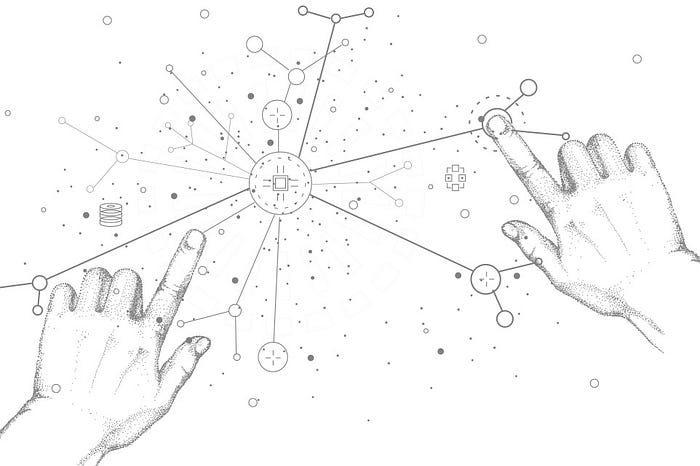Agile Data Governance: an essential practice for data-driven enterprises

It’s no secret that data has become crucial assets for enterprises today. In order to face up to innovative startups and powerful web giants, organizations must capitalize on their data. This brings great — likewise small — enterprises to start their digital transformations by becoming data-driven.
To reach the Promised Land of data innovation, data must be managed and at the highest quality. The implementation of such data governance is a chapter that data-driven companies must write.
What is Data Governance?
Governance associated to information systems first appeared in the 1990s. It refers to IT management ressources being implemented in enterprises to achieve their strategic objectives. However, with the explosion of new technologies for the purpose of collecting and sharing information, new rules & regulations to guarantee data protection are imposed.
We like to define data governance as an exercise of authority over decision-making power (planning, maintaining, and enforcing the rules) and the controls on data management.
In other words, data governance allows for a clear understanding of the different roles and responsibilities around data as well as the procedures and tools supporting data management within an organization. Data governance is therefore, essential for enterprises looking to treat their data as a “shared asset”. This set of practices, policies, standards, and guides will supply a solid foundation to ensure that data is properly managed to then, create value within an organization.
Read more about what is data governance and their different (defensive & offensive) approaches.
Agile Data Governance : Towards a new data governance
Good practices and feedback must be implemented in order for enterprises to constantly monitor and verify the validity of management rules on their data assets. We aim to shed some light on data governance attributes that are capable of taking on this new era’s challenges.
We recommend bottom-up, non-invasive, automated, collaborative, and iterative data governance. In one word, agile.
Bottom-Up Data Governance

The implementation of data governance must avoid pitfalls, all too often seen in the past via top-down approaches. This descending approach encourages that objectives and instructions be set by management and then implemented in the enterprise.
This way of managing has been proven in the past to be too hierarchical and bureaucratic. We recommend a bottom up approach, where individuals and their interactions are put in front of tools and processes.
Read more about how a bottom-up approach benefits data governance.
Non-intrusive Data Governance

Enterprises consider that classic approaches to Enterprise Data Management (EDM) require all parties involved to adopt a certain number of tools and procedures. In a world where data volume and variety are exploding, and where new tools for storing data ceaselessly pop up, a more reasonable approach exists.
Agile Data Governance must give freedom to employees to use the tools adapted to their uses. A non-intrusive approach means to adapt to an enterprise’s context and not the other way around. Enterprises must move little by little and experiment with their data management rules.
Read more about what is a non-intrusive approach in data governance.
Automated Data Governance

Using only human knowledge and intelligence for managing data have rarely led up to successful data governances. It is essential for enterprises to automate a maximum amount of processes relating to the extraction and collection of data.
With the help of artificial intelligence algorithms and machine learning, it becomes possible to interpret, give context, and deduce a more precise meaning to your data assets. This automation allows data managers to avoid the blank paper syndrome, and freeing them from tedious and repetitive tasks.
Read more about how automation is an essential attribute for agile data governance.
Collaborative Data Governance

Enterprises tend to have a single person or group to arbitrate data governance. However, this consistent practice has become obsolete, and data governance must no longer be the IT’s guarded territory. It’s by creating a data democracy that employees can execute their projects and access data on a larger scale.
By involving all collaborators of an organization, enterprises will benefit from collective intelligence.
Read more about how involving collaborators is a key attribute in agile data governance.
Iterative Data Governance

Implementing data governance must not take the form of a five year plan, but must adopt an iterative approach. This approach rests on the concept of validity, verification, experimentation, and iterative design.
Data governance must be built in stages in order to correspond as close as possible to an enterprise’s operations.
Read more about what an iterative approach in data governance means.
Why implement agile data governance?

Even if the Promised Land of data is real and recognized, its potentiel is still too untapped. The main reasons are:
- Data knowledge is still too tribal
- Tools and proposing approaches and processes are too cumbersome and cannot be maintained.
Therefore, the question is not about moving towards becoming data-driven, but how. We discussed above the five attributes that are necessary in order to implement agile data governance.
If you would like to know more about what agile data governance is and why enterprises should implement such governance, download our white paper “Why start an agile data governance?”
How is Agile Data Governance organized?
As seen above, organizations today often take on a defensive approach, usually inherited from Master Data Management or from larger initiatives for implementing information systems governance.
Very centralized, sometimes bureaucratic, they focus on data control and conformity, often resulting in limiting data access among all company employees. However, this dynamic is avoidable.

Data governing bodies carry out their role in a radically different manner. It would appear that what distinguishes them is less so the form of governance than the culture which permeates it.
This culture has a name: Data Democracy!
If you want to know more about the organization of this new, agile data governance, and its scaling processes, download our white paper “How does Data Democracy strengthen agile data governance?”.
